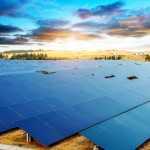
Wind Energy Facts You Should Know
Although solar power has long remained the most popular form of alternative, green energy, there are several different elements that have the potential to provide humanity with sustainable energy resources. In addition to harnessing the power of the sun, technologies also exist to transform wind and water currents into usable electricity.
However, most people don’t know very much about these energy alternatives. You may have seen wind farms populated by modern turbines popping up along barren expanses of highway, but there’s probably a lot you don’t understand about why these projects are becoming more popular and what the average person stands to gain from the growth of wind energy.
If you compare energy prices you’ll find that there is a lot of initial expense associated with setting up a renewable energy system for your home, whether you choose solar, wind, water, or geothermal options (depending on what is available in your area). Although you’ll eventually recoup costs thanks to free energy, you may want to stick with power and natural gas companies in Florida or your state of residence for the time being.
The good news is that many power providers are adopting renewable energy options to provide their customers with greener solutions. Here are a few things everyone should know about wind energy.
Wind Energy is Nothing New
Incredibly, windmills were first used in China and Persia as early as 2000 B.C. Since then, the technology used to harness wind energy has come a long way. Today’s wind turbines can reach as high as 20 stories tall and their blades, which look like airplane propellers, can be up to 60 meters long.
Obviously, residential models are much smaller, but they are only meant to provide power for a single home, whereas the biggest commercial wind turbines can support 500-600 American homes. It’s no surprise this form of renewable energy is gaining popularity – it’s a source of clean energy that produces no pollutions and requires no water use.
In addition, the amount of carbon dioxide (CO2) offset by the growing use of wind energy is astonishing, with estimates in 2013 of an offset of 95.6 million metric tons of CO2 equated with the 168 million megawatt-hours of energy generated by wind worldwide. In essence, CO2 emissions were reduced by 4.4%. We’ve come a long way from the windmills of old.
Wind Energy is on the Rise
With the eco-friendly and economic advances to be gained from utilizing wind energy, it’s no surprise that the use of wind turbines has increased by more than 25% over the last ten years, especially with the cost of turbines decreasing. There are now 43 states in U.S. that have wind farms, including over 1,000 utility-scale projects spanning 40 states and Puerto Rico.
In addition, wind energy is now the fastest growing source of electricity production in the world, with the greatest installed capacity in Germany, followed by Spain, and wind energy accounting for more than 20% of total energy produced in Denmark and Portugal. It is estimated that 20% of U.S. energy could come from the wind by 2030 at the rate we’re increasing wind projects.
Wind Energy Can be Commercial or Residential
A single megawatt of electricity can power 250 homes, and a large, commercial wind turbine is capable of powering up to 600 homes. On the residential side, a small, residential turbine can easily power a single home, provided wind conditions are ideal.
Tax Credits are Still Available
Federal tax incentives for renewable energy are quickly drying up, but according to Energy.gov, it’s not too late to save money on certain energy alternatives thanks to the Residential Renewable Energy Tax Credit. For example, installing a small wind energy system such as a residential wind turbine on your property could net you a deduction as long as it is placed in service on or before December 31, 2016. It doesn’t even have to be used for the principle residence of the taxpayer claiming the credit.
Many states continue to offer tax credits, rebates, and other incentives for residents that choose renewable energy systems, as well. You might even be eligible for rebates, credit, or cash back from energy companies in Florida, California, or your state of residence. It really pays to check so that you can save as much as possible when you opt to install a wind energy system.












Thank you for reading!
Leave a reply